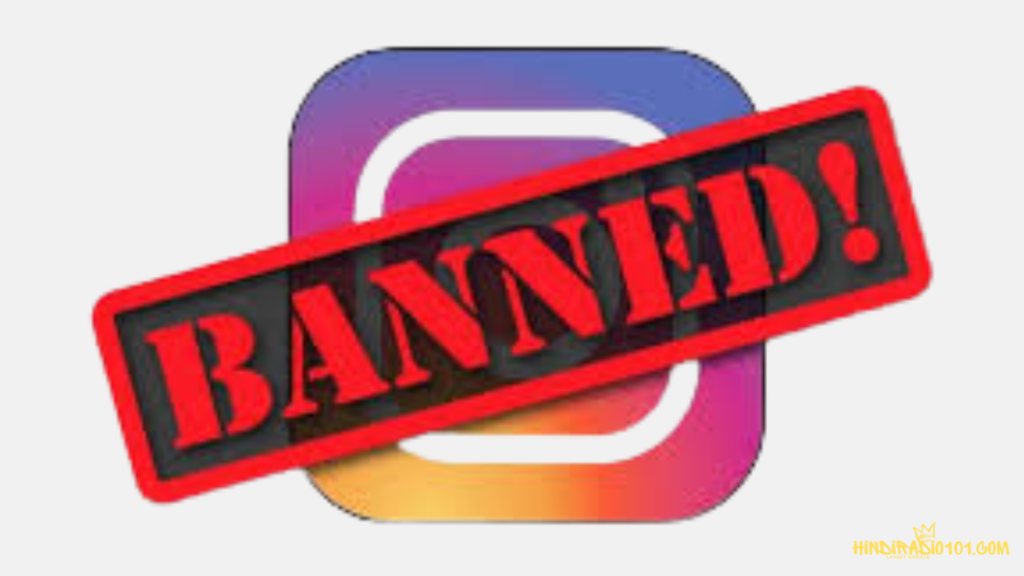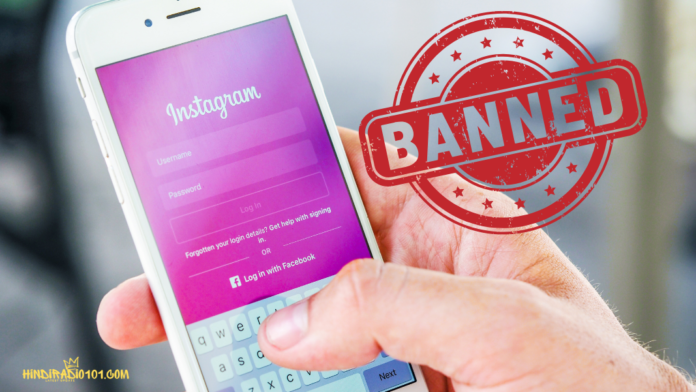Instagram banned in India 2025, 10 May
Instagram banned in India 2025, 10 May In a shocking ordinance that has drawn flak from the digital world, the government of India decided to ban the social networking site, Instagram, on 10 May 2025. MeitY issued a directive ordering internet service providers to block access to a social media platform nationwide for “repeated non-compliance with Indian data protection laws and failure to moderate harmful content”. Instagram was inaccessible to millions of users around the country by noon.
Instagram, a product of Meta Platforms Inc., has been an integral part of India’s digital ecosystem. With more than 300 million active users in the country, it is the centerpiece of influencer marketing, digital commerce, youth culture, and political outreach.
The app had grown beyond simply a photo-sharing app to become a platform for making a living, gaining visibility, community for fashion bloggers, small businesses, and local artists. India, second only to the U.S., was Instagram’s biggest user base, making this ban not only a national matter but a global one.
Now that date might land in the annals of Indian internet history as the day on which a dominant platform was unplugged and social media could be forever altered. Users, creators, and businesses are all now scrambling to know what’s next.
Background Context

The birth of Instagram in India has been quite phenomenal. After being introduced, the platform experienced explosive growth, especially after 2020, when the short-form video content reached popularity levels after the ban of TikTok. Instagram banned in India 2025, 10 May Following this, Indian creators immediately pivoted to Instagram Reels, turning it into one of the most engaging platforms in the country. The second most populous market after the US is India, where, by 2025, Instagram was already expected to have over 300 million active users. From influencers and content creators to e-commerce start-ups and local artisans, the influence of Instagram became a digital lifeline.
The platform has been receiving several warnings from regulatory bodies over the last few years. They were among, inter alia, worries on the failure to manage harmful or fake content, lack of algorithmic decision-making transparency, and, most importantly, non-compliance with the updated IT Rules 2023 in India, which focus on data localization and content takedown responsibilities. The government has pressed numerous times that foreign platforms have to conform to Indian laws, particularly in user safety and national security.
It not only holds on to Instagram but also to Facebook and WhatsApp, three of the most common sites in the country. Instagram banned in India 2025, 10 May Meta has put a lot of investment into India’s digital infrastructure and has associated with local businesses.
Reasons for the Ban

The government said that Instagram had not lived up to several key provisions of the Information Technology (Intermediary Guidelines and Digital Media Ethics Code) Rules, 2023, which required digital platforms to be transparent in how content moderation exercises are conducted. The platform was also scolded for not appointing a key compliance officer based in India, which was a legal requirement in the enhanced IT rules. Instagram banned in India 2025, 10 May These officers are supposed to play the role of contact points for the police and promote accountability.
The government also raised serious concerns regarding the privacy of the user data, that Instagram failed to properly stay the data for Indian users within Indian servers, and also failed to offer adequate guarantees of protection against misuse or cross-border sharing of data without consent. In addition, the platform was accused of failing to contain the spread of misinformation, especially during the politically sensitive period, which the government claimed presented a threat to the public order and national security.
Instagram banned in India 2025, 10 May The move is considered by many as a reassertion by India of its digital sovereignty and a turnaround from the claim that foreign tech platforms respect the Indian legal framework and cultural context.
Reactions to the Ban

The public’s response to the sudden ban of Instagram in India has also been mixed, as everywhere you turn, people are either diving with a passion or into a frenzy. Youth and Gen Z (i.e., the majority of the platform’s users) took to similarly alternative platforms like Twitter/X and Snapchat and expressed outrage and disbelief. Instagram banned in India 2025, 10 May Some lost thousands of rupees in hourly revenue in hours, while others started diverting followers to YouTube, Telegram, or Threads.
The small business owners who used Instagram to sell handmade products, boutique services, and niche content have been especially vocal in their protest, calling the ban a “digital disaster”. For many, the platform was their only channel of marketing and sales.
A spokesperson had said, “No company, be it big or small, can be above the land’s law”. On the other hand, the opposition parties condemned the move as authoritarian, short-sighted, and claimed that the government suppressed free speech and the disruption of the digital economy.
Around the globe, the story has gained major traction. Outside media such as CNN, BBC, and Reuters have framed the ban as a step in India’s increasing assertiveness in the regulation of big tech; Instagram banned in India 2025, 10 May Meta released a short statement of dissatisfaction and desire to cooperate with authorities in India to reinstate access.
Impact of the Ban
An Instagram ban has shivered India’s influencer economy, a thriving industry worth more than ₹1,200 crore (nearly $150 million). For digital creators, especially those who created viewership with Reels, the ban means a sudden revenue, exposure, and community. Instagram banned in India 2025, 10 May. A lot of influencers look for brand cooperation, affiliate marketing, sponsored content, and all this stuff is based on Instagram’s engagement metrics. Within a single night, partnerships have been cancelled and campaigns have had their budgets frozen, while audiences have been divided.
Small businesses and merchants who sell online have also been badly affected. The stories of thousands of homegrown entrepreneurs, with a special emphasis on women-led, were all about how they were using Instagram to sell their handmade products, art, fashion, and services. Lacking any physical locations or individual websites, Instagram became a catalog and a customer support system. The ban now leaves these sellers no other option but to look for other platforms, most of which have none of the reach and innate yet functional tools that Instagram had.
As Facebook and WhatsApp are still active, Instagram was the fastest-growing product for Meta in the country. The ban can result in financial loss, strained government relations, and progressive damage to the reputation.
Others call it bold regulation, but there are worries that it could discourage foreign investment in tech. Instagram banned in India 2025, 10 May. On a global scale, India is being monitored as it redefines the norm between digital freedom
Alternatives and User Shift

Indian users have started switching to other platforms after Instagram’s ban. Within a few hours of news of the announcement, Snapchat, Threads (also owned by Meta), and Twitter communicated a surging number of downloads on app stores of both Android and iOS. Instagram banned in India 2025, 10 May. Threads, which replicated many of the community capabilities of Instagram, came to be where people used to go if they were looking for a familiar interface, whilst Snapchat’s short-form video and messaging were all very popular amongst the younger users. As an already popular place for real-time updates, Twitter/X has created itself a new home for commentary and community participation.
At the same time, the void created by Instagram has provided an opportunity for homegrown Indian platforms to emerge. Apps, such as ShareChat, Moj, and Chingari, are aggressively pushing self as “Made in India” options to target both nationalism and the need to follow local laws. Those platforms that were popularized after the TikTok ban in the year 2000 and became a rage and part of mass culture are reviving yet again, with a spike in new user registrations and creator sign-ups.
The change for content creators is not just moving apps, but essentially constructing audiences and monetization models. Many are also now turning to YouTube, using Shorts and long-form content to remain in people’s attention and earn. People are also using Twitter/X to build communities, and Telegram to interact directly with fans. Instagram banned in India 2025, 10 May. Though the transition is a mess, it is nurturing innovation and experimentation as well.
Legal and Political Implications
After the government acted to prohibit Instagram, a legal tempest seems to have taken shape. Experts in the law disagree on this. Instagram banned in India 2025, 10 May. Although there are people who support the fact that the government has a right, according to the Information Technology Act, 2000, to withdraw platforms that do not meet national rules, there are others who ask if the decision was proportional and justified. “There should be a balance between national security and digital freedoms,” said a high court senior advocate in one of the numerous panel discussions. “A complete ban may not be the only available constitutional remedy.
It is also speculated that Meta may take recourse to courts or diplomatic talks for the solution of the issue. The firm has not ruled out going to court and is said to be examining the grounds for the ban with its legal advisers.
Could the ban be reversed? Possibly. Previous cases like the suspension of temporary apps have been a pointer that government decisions can be reversed if platforms make corrective actions, or they obtain a favorable court ruling. Instagram banned in India 2025, 10 May. However, unless Instagram is seen to be willing to comply with the Indian regulations, the ban may continue.
What Comes Next?
The government has not yet explained whether the Instagram ban should be permanent or temporary and has left millions of users and businesses in a state of uncertainty. But messages from inside the Ministry of Electronics and Information Technology (MeitY) indicate that the door may remain open to Meta if and only if it is all-in for India’s digital regulations. Instagram banned in India 2025, 10 May. In the past, similar bans on apps such as PUBG and TikTok would be in effect for long terms unless the platforms had made substantial structural changes.
Meta is to start backchannel negotiations soon. Analysts expect the company to propose hiring local compliance officers, adept in improving content moderation mechanisms and strict data localization rules. Meta can also bring legal action while being in diplomatic negotiations through platforms such as NASSCOM and IAMAI.
On the side of the government, this step is in line with its wider efforts of digital sovereignty. The government plans, through the Digital India Act (which is expected to replace the IT Act), to establish a solid legal ecosystem to control tech giants, make them answerable, and protect user data. Authorities have made it very clear that foreign platforms have no chivalry left; before being de-platformed, they should respect Indian laws.
Much will be riding on how both sides will handle the situation in the next few weeks. Instagram banned in India 2025, 10 May. Otherwise, India might take further steps toward digital self-sufficiency, as well as the traction of homegrown platforms.
Conclusion
Instagram in India on 10 May 2025 was a marking point in India’s digital environment. What started as a fight over the issue of compliance with data privacy law and content regulation has turned out to be a total face down of one of the most outstanding social media platforms in the country. Instagram banned in India 2025, 10 May. The move has impacted millions of people, influencer careers, shaken small businesses, and given important questions on how the global tech firms operating within India will get ahead when the source of livelihood is getting choked off.
On the other hand, platforms need to run things transparently but in compliance with the country laws under which they are operating.
To my mind, the ban is an increasing assertion of digital sovereignty – India has sent a strong message that it will not concede to its laws, no matter how big the tech giant is. Instagram banned in India 2025, 10 May. Although this position builds regulatory accountability, this needs to be balanced with dialogue, fairness, and foresight to ensure that the momentum is not extinguished or participation reduced from access to global platforms.
While we wait to see how Meta plays back and if the government will relent, a point is certain: the regulations of India’s digital space are trending. Instagram banned in India 2025, 10 May. This either heralds a new era of enlightened technology or widens the gap between worldwide platforms and nation-states.
1. How come Instagram was banned in India on 10 May 2025?
Instagram banned in India 2025, 10 May. This was caused by failure to conform to India’s digital laws, such as the one on data, moderation of content, and non-compliance with the updated IT Rules 2023.
2. How many users in India were affected by the ban on Instagram?
Without a doubt, India was the platform’s second biggest market with over 300 million active users.
3. How did the ban affect small businesses?
Such small businesses that depended on Instagram for marketing and sales were badly hit, and many had to search for alternative platforms to find their customers.
4. Will Instagram’s ban be permanent?
It is not a permanent ban. Meta could bargain with the Indian government and follow the local regulations to remove the prohibition.
5. Where are Indian users seeking refuge after the ban on Instagram?
Users are switching to other apps such as Snapchat, Threads, ShareChat, and Twitter/X, and many creators are also switching to YouTube and Telegram.
read more
How IPL Money is Paid to Players: Best Salary Breakdown, Bonuses & Contracts



